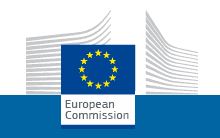On 29 September the European Commission announced a fresh push to speed up the implementation of EU-wide rules for the use of drones in the European Union.
More than 1200 safety occurrences – including near-misses between drones and aircraft – were reported in Europe in 2016, which underlines the pressing need for a modern and flexible EU regulatory framework, said the Commission. It has called on the European Parliament and the Council to agree on its proposal from December 2015 establishing an EU-wide framework for drones. Pending this adoption, the Commission’s Single European Sky Air traffic management Research Joint Undertaking (SESAR) – whose role is to develop the next generation of European Air Traffic Management –has made half a million euro available to support the demonstration of “geo-fencing” services (see related article: “SESAR JU issues call for proposals on geo-fencing research”, 29 September). Geo-fencing can automatically prevent drones from flying into restricted zones, such as the vicinity of airports.
Commissioner for Transport Violeta Bulc said: “Drones offer tremendous opportunities for new services and businesses. That is why we want Europe to be a global leader. I am confident our modern and flexible regulatory framework will give rise to new European champions in this sector. But safety always comes first. If we don’t move fast enough, the near misses between drones and airplanes could one day have disastrous consequences. I am therefore calling on the European Parliament and the Council to swiftly agree on our proposal from December 2015.”
Ensuring that drones can safely integrate the airspace alongside other users (such as aircraft) is fundamental. This is why the Commission proposed in November 2016 to create an automated traffic management system for drones operating at low-level, referred to as the “U-space”. Geo-fencing is a key component of the U-space.
Today’s funding comes on top of an envelope of EUR 9 million that has already been earmarked for exploratory projects to speed up the development of the U-space, such as the automatic identification of drones or drone-to-drone communication.




